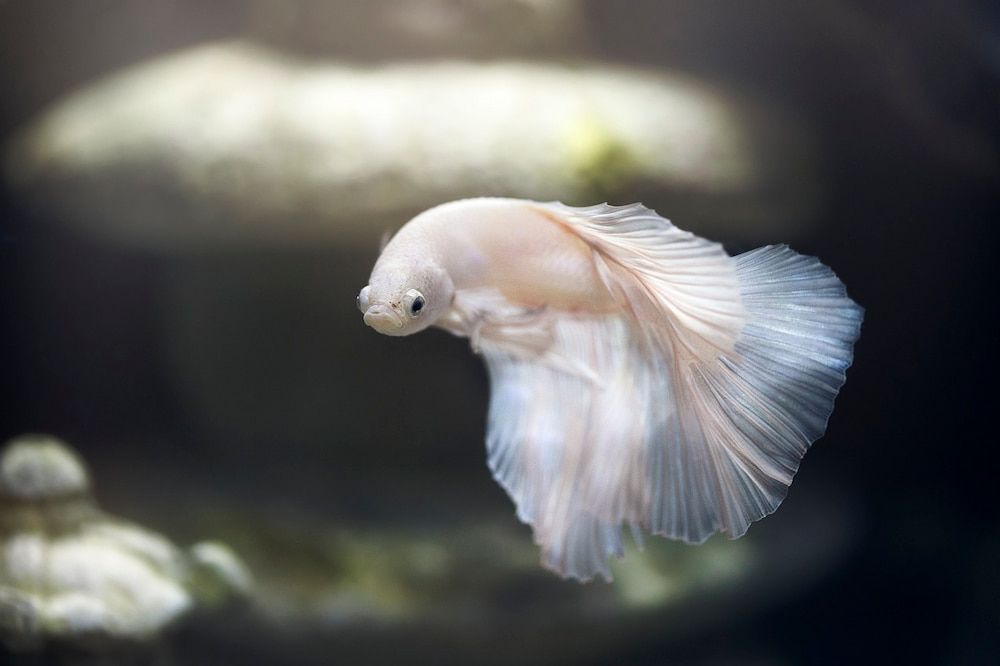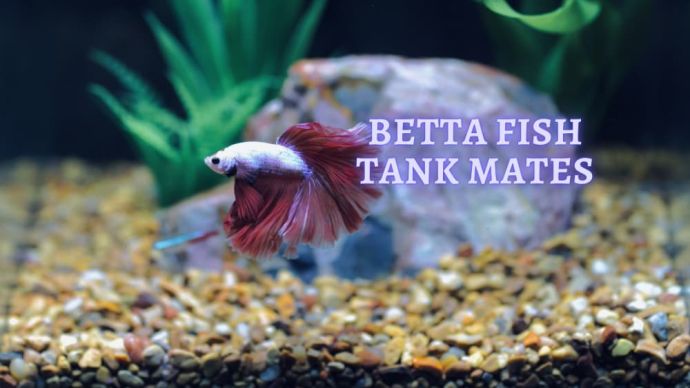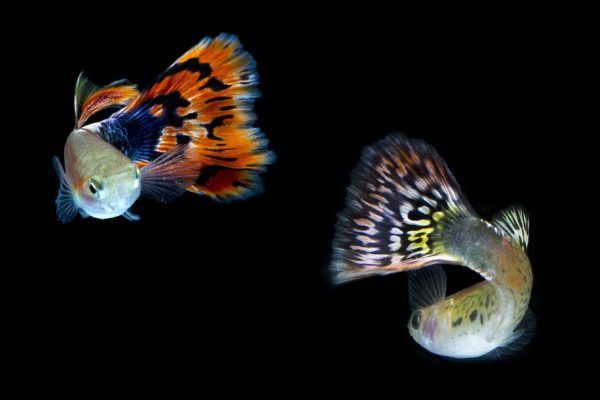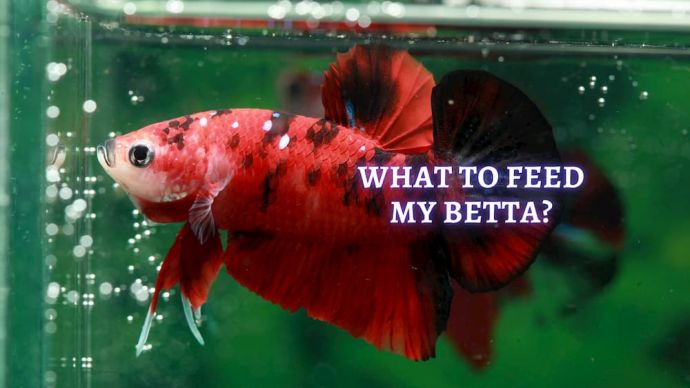Breeding Betta Fish: All About Proper Equipment, Conditions and Timing
Written by:
Author: Scott Jeffrey
Scott is a professional blogger with 12+ years of experience in writing, and holds an MA in anthropology. He has two cats as housemates. Also, Scott is passionate to research on pet-related topics such as dog training, puppy feeding, and cat health.
View all 63 articlesLearn about our editorial process and veterinary review board.
Viewed: 49
Updated on: 03/07/2023
Breeding betta fish can be exciting and rewarding for any beginner or experienced aquarist. But it is essential to understand the basics before jumping into the process. With that in mind, here is a guide on breeding betta fish with information on everything from tank setup to selecting the right equipment.
This article will go into great detail about how to breed betta fish. It will discuss what equipment and substrate you need, the steps involved in setting up a tank, choosing the right location, and selecting compatible pairs of betta fish. The article will also provide a step-by-step guide on breeding betta fish, with helpful tips and suggestions.
Can you breed betta fish?
Breeding betta fish in captivity can seem daunting, but with the proper knowledge and dedication, it is possible to breed these majestic creatures successfully. Understanding the challenges associated with betta breeding before taking on this endeavor is essential. It would be best if you found compatible pairs of betta fish, set up a tank with the right equipment and substrate, choose a suitable location for breeding your fish and have the plan to care for all of their offspring. Additionally, you must consider finding individual homes or giving away extra baby bettas since they cannot live in community tanks like other fish species do. However, if you are willing to put in the time and effort needed, you can have an enriching experience witnessing the life cycle of these colorful animals come full circle.
It is best to begin when the fish are still young. Between the ages of 4 and 12 months, these creatures display lower levels of aggression and are more likely to accept one another. This makes them especially suitable for pairing off to breed. If you wait until they are older, these traits become more pronounced, making mating difficult even if their genders allow it. With the proper preparation and care, you can enjoy breeding these fish.
The betta breeding process is an intricate and delicate undertaking that requires a vigilant eye. There are numerous steps throughout the process, and if even one of them needs to be addressed, the entire endeavor could come to an abrupt end. Additionally, it can be a very aggressive activity, so you must remain aware and intervene swiftly to ensure that neither fish becomes injured during mating. Although this process may seem daunting, watching your betta’s life cycle come full circle in its own habitat with some patience, research, and commitment is possible.
What do you need to breed betta fish successfully? (Equipment and environment)
Before you start breeding and go for supplies, any breeder must be prepared with the proper knowledge.
To succeed in betta breeding, you must devote a considerable amount of energy and resources. Before beginning, you should ensure you possess the necessary skill set, such as familiarity with cycling tanks, monitoring water quality, and understanding the nitrogen cycle. You will also need to have enough space and financial means to set up and maintain different tanks for each step of the process – from a habitat for the male betta to one for the females or group and even a specialized tank for when mating takes place. This is not an endeavor for beginners; making all the required preparations can easily take a month or more and must be done carefully for the entire process to succeed.
Next, you should move on equipment. The breeding tank is the first piece that is crucial for your setup.
Setting up a breeding tank for bettas requires strategic planning and an eye for detail. It should be kept from high-activity areas, as bettas prefer privacy while breeding. A low-light room without much human or fish traffic is ideal for installing the tank. Ideally, it would help if you began the tank set up at least two to three weeks before introducing the bettas. It must only contain about three to five inches of water; this shallow depth is necessary as it concedes any difficulty for the fry in reaching the surface to breathe and feed. When mating occurs, you may need to raise the water level slightly depending on your desired outcome.
When setting up a breeding tank for your bettas, don’t forget to include a sponge filter, air pump for oxygenation, and a heater set to 80℉. Ensure that no part of the heater is exposed above water level to prevent it from overheating the air instead of the water. For fry tanks specifically, adding an Indian Almond Leaf or styrofoam cup can provide an area for bubble nests during mating season. As a bonus tip, you can tape the styrofoam cup to the side of your aquarium and cut out a section at the bottom so that males can enter and exit quickly if you want to monitor the mating process closely.
When close to finishing the setup of your breeding tank, remember to include moss and other small decor items to provide secluded places for the female betta to hide during the mating ritual. Ensure that you place only a little decoration as you still want the male betta to be able to find her. Give the water time to cycle and stabilize before introducing your pair – usually, it takes around 24 hours for a heater to raise the water temperature to its desired levels. Water parameters should remain at approximately 80℉, a pH level of 6.5, and hardness between 4-8 dGH.
Keep fresh or frozen foods on hand, like daphnia eggs or brine shrimp, to ensure the fish have plenty to eat to sustain a healthy diet. Regular water testing will be required, and you will also need a specialty divider to keep the fish separate after they mate so they won’t be overly aggressive. Regular water testing for PH, GH, and Ammonia levels will help you sustain an environment for breeding and rearing the fry.
READ MORE: Betta Fish Care Guide
How to sex a betta fish?
There are a few key differences when it comes to identifying male and female adult bettas. Males have long dorsal, ventral, and caudal fins that drape due to their weight. Their coloration is usually brighter than females, who have shorter fins. You can also look for a male’s display of dominance in front of a reflection – males will flare their fins in this instance. Additionally, you may be able to find a female betta’s egg spot located near the edge of her ventral fin close to her head, although some males can also develop a false egg spot which should not be relied on as identification.
How To Breed Betta Fish Step-by-Step (choosing breeding pair, etc)
When purchasing bettas for breeding, we recommend buying from a reputable breeder rather than a pet store. The breeder can give you information about the genetics and age of the fish, two essential considerations when breeding. It is best to start breeding bettas between the ages of 4 and 12 months old, so be aware of this if you are purchasing an older fish. Consider that after being transferred to a new home, your betta will need at least a month to settle in and destress before beginning the breeding process.
Several characteristics must be considered when selecting a male and female betta pair. Females naturally choose their mates in the wild, so you should pick a bright and energetic male. The three main selection categories are color, fins, and activity level. Studies suggest that females favor brightly colored males with abundant carotenoids, indicating a strong immune system and potential foraging skills. Additionally, healthy fins provide visual cues about the male’s general health, while energetic males indicate good genes and robustness against illness.
RELATED: Beta Fish Types
Selective breeding requires patience as it may take several cycles for traits to pass through and be visible in the offspring. If you have betta fish with traits you want to pass on, pick out that male betta when breeding bettas. Selecting betta with good color traits or nice fins will make sure you get attractive male betta fish as you continue your breeding program. It may take a few generations of betta breeding for you to get the traits consistently, but the male betta you can provide to friends or customers after a few times using the breeding tank will be a huge improvement. With enough experience, the male betta you produce may even be an original type of betta not commonly offered.
Conditioning and preparation are critical to getting the best results when breeding betta fish. Provide both males and females with live food, such as brine shrimp and insect larvae, to help build strength and coloration. Both tanks must be separate and allow time for the bettas to settle in before beginning conditioning.
When the female betta starts to display vertical bars or stripes on their abdomen, they are ready to mate – this is known as ‘barring.’ It is important not to attempt mating before this barring pattern has developed. Otherwise, it could be unsuccessful and potentially violent. Always have a plan for your breeding tank so that the fish can be separate after breeding. Female bettas are not usually aggressive, but the breeding pair is best separated as you breed bettas.
There are a few options to add the female betta to the breeding tank. These include using an open-top vase (with the water level below the top of the vase) or placing a divider within the tank. After adding the vase or divider, allow your female to adjust to its new surroundings for around 30 minutes.
Now add your male betta to either the open topped vase or on the side of the divider away from the female. His color will likely deepen when he notices her and he will start to flare his fins in a display of courtship. The female may also darken in color and show her barring pattern, possibly even flaring their fins back at him. These reactions are all normal behaviors, though it is important to watch closely for signs of aggression from either party.
After the initial interaction between the male and female, he will begin to construct a bubble nest. This process can take up to an hour and should be watched closely for any signs of aggression. To give them time to work out their differences, you must leave them separated for at least one night before proceeding with the breeding process.
The breeding process begins by adding the male to the breeding tank, usually done by lifting the divider or transferring him from the vase. If all is going as planned, the female will head directly toward the male’s bubble nest and inspect it. If not up to her standards, she may try and destroy it or swim away – in which case you must start again from Step 3 of this process. After acceptance of his nest, the male will begin to flirt more aggressively by chasing her in an attempt to initiate a mating dance.
The breeding process has now officially begun and can take a few hours to complete. During this time, you should watch the pair closely for any signs of aggression. The female will ensure that the bubble nest meets her standards before she engages in further courtship with the male. This is typically signaled by the pair fanning their fins and displaying their sides at one another. Should the female not be properly impressed by the male’s display, he will recommence chasing her around until she finds a hiding place in the tank decorations or moss. Depending on her personality, some females may take a submissive approach while others challenge the male directly.
After the bettas’ mate, the male will flip the female upside down and wrap his body around hers until they sink or float together. This is repeated several times before the female enters into a coma-like state to drop eggs. At this point, she may appear dead as she floats sideways but will quickly revive. Removing the female at this stage is recommended, as when she wakes up, the male may perceive her as a threat. The male then takes over the parenting duties of the bubble nest and attends to the eggs until they hatch.
Once the female betta has finished dispersing eggs, she should immediately be removed from her private tank. The male betta then takes over, transferring the eggs to their bubble nest and fanning them for increased oxygen flow. He will also monitor the eggs until they hatch and return any fry that has been knocked free from the bubble nest. After hatching, the fry will hang the tail down for the first few days before slowly moving into a horizontal position. It usually takes around two days after hatching before they start swimming.
Healthy betta babies will need to be separated as they mature, especially the mature male fry. Male eating is common for the fry, so separate betta breeding tank setups will protect the fry when they emerge from the bubble nest.
How do I know if my female betta is ready to breed?
When it comes to female bettas, clear visual signs signify when they are ready to mate. A stripe across the female’s back is one indicator, but another key sign is the presence of a barring pattern (vertical stripes along the midsection), not to be confused with horizontal stripes.
Once the female is loosed in the tank, your male will put on a dazzling show and start pursuing her. Be careful to keep an eye out as male bettas can be quite aggressive and take the female out of harm’s way if needed.
When your male and female betta seem to be getting along well, cover the top of the tank with plastic wrap for extra humidity. It’s not uncommon for the male fish to lightly bite the female’s fins or engage in chasing as part of their mating ritual. But if she isn’t participating and instead hides from him, it’s best to return her to her own tank and try with a different female.
How long does it take bettas to breed?
When bettas are ready to breed, they enter into an intricate mating dance lasting anywhere from 2 to 6 hours. The male will begin the courtship by building a bubble nest in an attempt to woo the female. During the process of constructing the nest, he may also make chirping noises or vibrate his body against hers. Ultimately, it’s up to the breeding pair to decide when they have created a satisfactory bubble nest and once that is achieved, they typically move on to spawning.
What to do after breeding betta fish?
After spawning, it is essential to separate the male and female bettas. The female should be moved into her own private tank as soon as she has finished laying her eggs, while the male will remain in the breeding tank to take care of the bubble nest and the fry. Upon hatching, he will fan the nest with his fins to increase oxygen flow and gently return any of the tiny fries that might have become dislodged from the nest. After two days or so, the fry will start swimming freely on its own.
Give your bettas a rest after they have bred, and do not attempt to breed them again for at least 14-16 days.
What do I feed the Betta Fry?
Betta fry will need high-quality food in order to thrive. The hatchlings can receive a diet of dry ground food, vinegar eels, micro worms, and brine shrimp. A baby brine shrimp is usually best for the earliest days, and the hatchlings will eat foods like vinegar eels after three days.
The temperature for the fry tank should be between 85 and 88 degrees, and you will need to siphon out water regularly in order to keep it fresh. Using a sponge filter and heat wrap on the tank is the best way to keep conditions managed. Adding in live plants, driftwood or small toys will also help your survival rate giving the smaller fish a chance to hide.
After 8-9 weeks, you will start to see personalities develop amongst betta fry and see their colors starting to come in. At this point, males that have survived and thrived will need to be separated into their own tanks before they display any aggressive behavior.
READ MORE: Betta Fish Temperatures
How many times can a betta fish lay eggs?
Betta fish usually lay eggs every few weeks, although they may produce eggs just once or twice a year. To ensure that the female betta is ready for another breeding session, it is advised to give her a rest period of 12 to 14 days between sessions. If the time gap is shortened to two weeks, it is essential to ensure optimum conditions are present.
A single mating pair can produce up to 400 eggs, and with a survival rate of 90%, many of them will likely hatch into fry. Though the exact number of fertilized eggs may vary, the high survival rate guarantees a significant amount of betta hatchlings. Even with all the risks of breeding betta fish, it is likely that many young bettas will make it to adulthood. However, some may fall prey to their larger siblings in the breeding tank. Therefore, it is essential to plan ahead to ensure sufficient space and resources for the hatchlings.
People also ask:
Can I breed betta fish in a bowl?
Betta fish are best bred in areas where they can feel comfortable and in safe conditions. Female and male bettas will need the space to stretch out and the fry will need a place to hide and develop. You can breed betta fish in a bowl, but it is often much easier to do it in a tank with proper separation, filtration and supports for breeding.
Is breeding betta fish profitable?
Breeding betta fish is not the most profitable type of fish breeding that you can take on, but it can be worth it if you breed enough bettas or have a way to sell them. The average price for a betta fish ranges between $2-30 so if you have a betta fish that has desirable traits, you could be looking at a few hundred dollars every time that you breed your fish. If you have betta fish that have good coloring and you are able to consistently produce 20-30 fish in each litter that you can sell, it is likely that you can cover the costs of managing your aquariums, food and electricity with a small profit. Breeding bettas is not really a way to earn a living, but if you love the process, it can be a fun way to pay for your hobby in aquariums.
Can you have a male and female betta fish together?
Male and female betta fish can coexist together in the same tank but it is recommended that the male be slightly smaller than the male. Male bettas are often the aggressive fish, and if they perceive another fish to be a threat, they may not mate and they may not be peaceful with them. Do not try to keep multiple male fish in the same tank with a female fish to increase the chance of mating. Two male fish in the same tank will get aggressive with one another and you are likely to get an injured fish.
How many babies do betta fish have?
Betta fish can have 400 fry develop out of a single litter, but the survival rate for the fish is usually relatively low. Most betta fish will have no problem producing 20-30 new bettas in a single breeding session. Certain varieties of bettas can produce hundreds, so it is important to be prepared with the right number of tanks and separate areas for the betta fish as they mature. Keeping the bettas in small tanks when they mature is fine if you plan on selling the new bettas or or moving them to a larger aquarium eventually.
As you continue breeding betta fish, you will get used to the tank design that works best. With future betta breeding, you will know when to transfer the male betta fish, when the male betta have developed and how to get the breeding tank ready to breed. You will also have plenty adult bettas that you can use for a portfolio in a betta tank to display fish you get out of the mating process.
Conclusion
In conclusion, breeding bettas is a fascinating and rewarding process that can be quite enjoyable for both seasoned and novice aquarists. Through careful planning, research, and patience you can create an environment that is well-suited to raising healthy, vibrant bettas. Whether the goal is to improve the gene pool of your existing fish or start a business breeding your own unique type of bettas, these fish can be a wonderful choice for those interested in the hobby of breeding fish.
Bettas are excellent for beginners because they don’t require tropical conditions. The breeding process can be very exciting with the colors created between the various betta fish varieties. If you are interested in breeding betta fish for yourself, check into the guide, prepare accordingly and always start with a good quality mating pair!




























